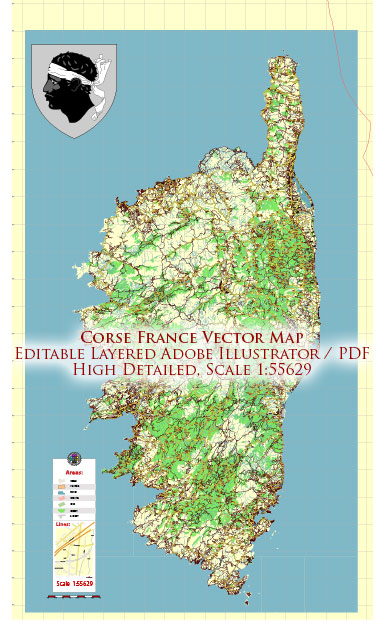Corsica, a French island located in the Mediterranean Sea, is known for its rich biodiversity and unique natural landscapes. The island’s diverse ecosystems include mountains, forests, wetlands, and coastal areas, contributing to a wide variety of plant and animal species. Here’s a brief description of Corsica’s biodiversity:
- Flora:
- Corsica is home to a wide range of plant species, including endemic ones found nowhere else in the world. It boasts more than 2,000 species of flowering plants, with a significant number of them being unique to the island.
- The maquis, a Mediterranean scrubland, is a dominant vegetation type. It consists of aromatic herbs, shrubs, and low trees like myrtle, rosemary, and arbutus.
- Fauna:
- Corsica’s fauna is diverse, with a mix of native and introduced species. Some of the notable animal species found on the island include:
- Corsican red deer: An iconic symbol of Corsica, these deer inhabit the island’s mountainous regions.
- Wild boar: Common in Corsica’s forests, these animals are frequently hunted.
- Mouflon: A type of wild sheep found in the island’s rugged terrain.
- Golden eagle: Among the bird species, the golden eagle is a top predator in Corsica.
- Sea turtles: Corsica’s coastal waters provide nesting sites for loggerhead and green sea turtles.
- Corsica’s fauna is diverse, with a mix of native and introduced species. Some of the notable animal species found on the island include:
- Marine Biodiversity:
- The Mediterranean Sea surrounding Corsica is home to a wide range of marine life, including various fish species, sea turtles, and marine mammals like dolphins and seals.
- Corsica is known for its clear waters, making it an attractive destination for scuba divers and snorkelers who can explore underwater ecosystems such as Posidonia oceanica seagrass meadows and colorful corals.
- Protected Areas:
- Corsica has several protected natural areas, including nature reserves, national parks, and regional parks. One of the most notable is the Parc Naturel Régional de Corse (Corsica Regional Natural Park), which covers a large portion of the island.
- Endemic Species:
- Corsica’s isolation has led to the evolution of many endemic species, meaning they are found exclusively on the island. This includes Corsican nuthatch, Corsican fire salamander, Corsican swallowtail butterfly, and more.
It’s important to note that Corsica’s biodiversity is at risk due to factors such as habitat destruction, invasive species, and climate change. Efforts are being made to conserve and protect the island’s unique ecosystems and species, including through the establishment of protected areas and conservation programs.


 Author: Kirill Shrayber, Ph.D.
Author: Kirill Shrayber, Ph.D.